Spring is in the air! Birds are chirping, some early spring flowers are starting to bloom, the last (hopefully last) snowfall of the season has come and gone.
Aside from allergies for some folks, spring is such a great time of year! It’s like a new beginning, especially in the colder parts of the country where the winters can seem unbearable.
But with spring every year, come bugs out of hibernation. In this post you will learn about the 8 spring pests to watch out for this year, things you can do to prevent these spring pests in your home and garden, and how we treat for these pests with our full spring application.
Table of Contents
- Introduction to spring pests
- Things you can do to keep spring pests out
- How we treat for spring pests
- Conclusion
Introduction to Spring Pests
Spring pests are considered those creepy crawly pests that wake up in the early spring from their winter slumber or you just notice them in the spring time. Fall pests come into your home in the fall, but they wake up in the spring and you may notice them. Fall pests are Asian lady beetles, boxelder bugs, stink bugs, hornets, wasps, and even cluster flies, and if you notice them now, here’s why.
But typical spring pests are mosquitoes and ticks, ants, fleas, wasps, spiders, centipedes and millipedes. Here is a brief introduction of each.
Mosquitoes
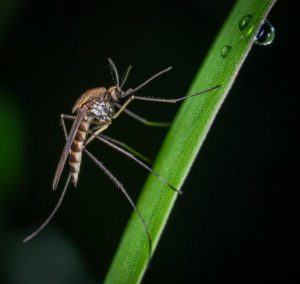
Mosquitoes lay their eggs early on and it only takes one week for the mosquito to start biting. Barrier treatments are crucial to keeping these pests at bay. Barrier treatments are included in most monthly mosquito control treatments and can take out 95% or more of the mosquito population in your backyard.
Mosquitoes transmit many viruses and diseases like yellow fever, West Nile virus, malaria, and Zika, to name a few. More people die from mosquitoes related illnesses than any other cause, an estimated 52 billion over the course of human history. While there are many different species of mosquitoes, it’s important to know how to treat for each variety that lives near you.
Ticks
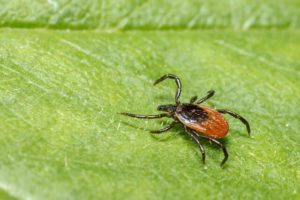
Most ticks in Minnesota live for 3 years and can lay 3,000 or more eggs, which means they hibernate and molt for 2 of those 3 winters. Ticks come out in spring to start looking for hosts.
Starting spring tick control is critical, especially with Lyme disease on the rise in the United States. Barrier treatments are important, like with mosquito control, but it is more important to really hit the harborage areas for ticks.
Ticks climb trees and grasses, so it is up to us to think like a tick in order to treat proactively and preventatively.
Ants
Noticing ant activity early is a good sign to get pest management professionals out to your property to treat preventatively against any infestations that may come from letting these guys breed and the colonies grow in size.
You may start to see little black winged ants. These are normal in spring time and are necessary to establish a colony. Take out these ants and it wipes out the colony’s numbers for sure.
Both pavement ants and common ants are normal spring pests, but this year with the warmer temperatures early in the spring, we know carpenter ants are waking up from their hibernation earlier too.
If it we have a hot spring, you may start to see carpenter ants early. This is normal too, but carpenter ants require special attention and consideration because they build with wood.
Springtails
These little pests are brown or black and very tiny. Springtails come out in other seasons too, but they are attracted to water and in Minnesota, spring is perfect with all of the melting snow!
These pests can congregate in kitchens and bathrooms, as a result of being attracted to water. They can also be common in basements whenever it floods or rains.
Fleas
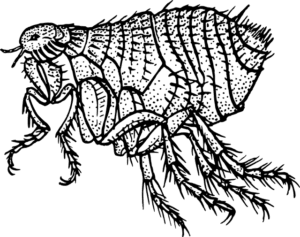
Fleas are external parasites that live by eating the blood of a host (birds and mammals). Each flea becomes an expert traveler of their host, and doesn’t typically move host species in their lifetime.
Fleas have been known to become more prevalent in tall grasses and ornamental shrubbery. This is due to wildlife in these areas. If you have any wildlife near your home or any pets that use your yard, you may want to learn more about this pest. Experts at the NPMA Annual pest control conference stated fleas as the pest of the year in 2021.
Spiders
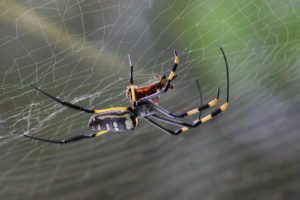 Though we don’t have many poisonous spiders in Minnesota, these pests are still a pain to have in your home. Spiders have been known to eat other pests that may get caught in their webs, but they are a nuisance to humans.
Though we don’t have many poisonous spiders in Minnesota, these pests are still a pain to have in your home. Spiders have been known to eat other pests that may get caught in their webs, but they are a nuisance to humans.
Their webs are one of the more annoying parts about them. Have you had spider webs build up on the outside of your home or in your basement? Not appetizing when you are walking through a doorway and you get a face full of web!
The most common spiders in Minnesota are cellar spiders, daddy long-legs, garden spiders, wolf spiders, and brown recluses.
Wasps
Paper wasps hibernate in the winter and then come out in the spring. During spring they travel around looking for the perfect place to nest, typically in soffit, facia, and gutter areas of homes and businesses. These wasps are a popular spring pest.
Hornet, wasp, and yellow jacket colonies consist of one queen and many, many worker drones. The queen, while female, doesn’t have the ability to fertilize the eggs without the workers’ help. The drones seek food items for the queen, which is why they often build their nest close to human habitation.
Centipedes and Millipedes
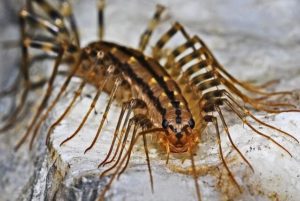
Centipedes and millipedes are pretty solitary creatures. These pests lurk in your basement, cellar, dark secluded areas, waiting for another type of insect to scurry past to pounce. Some centipedes can be fast, but most are just intimidating to its prey.
Centipedes and millipedes come out in the spring often. Millipedes especially, as they enjoy the soils of gardens and mulch beds next to your house. Millipedes can be dangerous to your garden, and thankfully the Midwest isn’t home to the foot-long millipedes.

Fall Pests
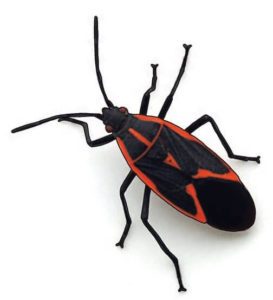
Treatment for these pests in the spring is unnecessary and ineffective. If you have any Boxelder bugs, Asian lady beetles, or any other fall pests, simply vacuum them up. These pests are waking up and heading outdoors to breed, so it is ineffective to treat indoors. But, this explains why you have fall pests now. The exterior treatment we offer in the spring will have an effect on these pests.
Spring preventative treatments on the exterior of homes and businesses is advised by Pest Control Technology. Done Right Pest Solutions offers an exterior treatment paramount to other pest control companies. While some companies focus on just the foundation of the home, we focus on the whole home.
Our spring treatment consists of a full exterior power spray, coating the home with an invisible shield from any of these spring pests. A thorough soffit, facia, and gutter treatment is vital to the success of any spring treatment because stinging insects like paper wasps and hornets like to try to get into homes in these areas.
Things You Can Do to Keep Spring Pests Out
While some pests require a pest control expert to treat, like bed bugs, fleas, or cockroaches, others may be treated by the homeowner. Pavement ants or common pose no physical threat to the structure, because they don’t build with wood like carpenter ants. These pests are just a nuisance.
But well placed over-the-counter bait like Terro can be effective. It does depend, however, on these ants’ location, the size of the satellite colony in your home, and the activity of the queen ant.
Terro is effective for the ants that come to the bait, but it rarely ever reaches the queen, unless the colony is small or the queen’s activity hasn’t picked up much for the season. Terro can reach the queen over a large amount of time (weeks), as the workers die off the queen may come out.
What is more important than treating these pests, is preventing these pests. Below we have some tips for how to prevent pests in 4 areas of your home: kitchen, bathroom, basement, and garden.
To check out more seasonal pest control, check out our category within our blog.
Kitchen
Ants often invade kitchen in the spring. You’ve probably seen a trail of these armies marching single-file along your cupboards to find crumbs or any sweet substance for food.
I remember staying at my grandma and grandpa’s house when I was little. One morning we were fixing our breakfast of oatmeal and malt-o-meal, which due to the plain taste is not complete without a topping like honey. We set the jar of honey on the table and realized that ants had marched up the side of the container, around the grooves of the lid, and into the honey overnight! No honey on my cereal that day!
Ants have been known to ruin picnics too. They have a sense for sweet things and march as quickly as their little legs can carry them toward this food.
Spring cleaning: Clean out all your cabinets, wipe down the cabinets with warm water and dish washing soap, and dispose of any outdated items and replace in cabinets. Ants and other pantry pests like outdated food.
Pest World gives some tips such as lining cupboards with paper or foam and putting fresh down every year.
Flies and cockroaches also like kitchens so it is important to clean and inspect for any activity of these pests too.
Bathroom
Pavement ants have been known to make their homes in your bathrooms. Have you ever seen a pile of sand in your bathroom or basement? Pavement ants are the types of ants to make their homes of sand in your home.
Regularly sweep and check for leaks. Standing water can be an attractant for pests. For spring cleaning, empty the bathroom closet or cabinet and the medicine cabinet. Wipe down all surfaces with warm water and dish washing soap and place the items back inside. Regularly wipe down counter tops where water can remain as well.
Silverfish and cockroaches also like bathrooms so it is important to clean and inspect for any activity of these pests too.
Basement
Rodents, spiders, centipedes and millipedes, and other creepy crawlies like to inhabit basement spaces. It is dark, damp, and secluded. All things most pests like.
In order to maintain a pest free basement, go through your valuables and storage items at least once per year. Clean in the nooks and crannies and generally inspect for things amiss: rodent droppings, a scurrying pest, any mouse nests, etc.
Be mindful of any cracks or crevices that are pretty large. If you can seal these openings with caulk or putty, do so. Any large openings should be fixed with a local handyman or repair man.
Learn more ways of how to keep your home pest free.
Garden
It is pretty much impossible to keep all pests out of your gardens, but we hope to give you some warning signs. GardenTech gives some good insight.
Carpenter ants like rotten wood, and sometimes the wood postings around gardens get rotten and serve as the perfect habitat for carpenter ants.
If carpenter ants get to your gardens, there’s a good chance they will get to your homes, as these pests can wander up to 100 yards away from their homes in search of food.
While they don’t eat wood, carpenter ants do build with it, like their name implies. As a result, gardeners and homeowners often seek to control these pests first before they make a home out of your home.
Keep an eye out also for any ground hornets or wasps.
Garden spiders often inhabit your gardens. Though they may bite, they aren’t poisonous. Still, spider bites, like wasp stings, are no fun!
Millipedes really like mulch and soil with organic matter and decaying plant matter. Gardens are the perfect place for these pests! Millipedes like to hide in the mulch of flower or food gardens. While the Midwest doesn’t have any of the larger millipedes that bite, they are still something to look out for.
How We Treat for Spring Pests
As you have learned there are many pests that seem to come alive in the spring time, waking up from a season of slumber. While some of these pests are simply bothersome, some are dangerous to your health and well-being.
Spring pest control is a must for these dangerous and nuisance pests. Most pest control companies have plans in place for seasonal pest control. Done Right Pest Solutions is no different in that regard.
However, we do offer a different approach to spring pest control than most in the Twin Cities metro area. Most pest control companies offer a foundational treatment in the spring, to keep pests out of homes through the foundation.
We view spring as one of the most important opportunities to perform preventative pest control to the entire house. We perform exterior power sprays to the foundation all the way up to the soffits, gutter, facia area. We also treat about 3 feet out from the foundation.
The reason we treat the whole house is because plenty of flying pests are looking for homes to nest, like paper wasps up by the soffits and facia. Even some other stinging insects try to sneak in around door frames and window frames.
To prevent all spring pests, we treat the full exterior of the house. We also treat preventatively on the inside for insects and rodents, as needed, depending on where you live.
This treatment can be purchased individually with a seasonal warranty, or as a part of our Peak Seasons Plan, which covers your home for all 12 months of the year with treatments focused on the peak seasons (spring, summer, and fall; winter if you need). Want to know How to Know if the Peak Seasons Plan is for You?
Done Right Pest Solutions treat very thoroughly for mosquitoes and ticks and strive to keep your yard pest free, just like your house!
While we could never be 100% successful, because it is the outdoors, with the product we use and our correct application, we can eliminate up to 95% of mosquito and tick populations from your yard with insect growth regulators, sterilization, and the killing effects of the knock-down product.
Read more about our Mosquito and Tick Plan.
Conclusion
You have learned a lot about different types of spring pests like mosquitoes, ticks, ants, springtails, fleas, spiders, wasps, centipedes and millipedes. There are so many pests that come out and about in the spring, which makes spring pest control crucial for your health and well-being.
You learned things you can do to keep spring pests out of your home. You learned how we treat for spring pests, which is unique to Done Right Pest Solutions.
Give Done Right Pest Solutions a call this spring to talk about the pest issues your home faces and how we can help keep you safe. 651-342-9489.
We look forward to helping you.
Done Right Team
Was this post helpful? What spring pest control have you had in the past? We would love to hear your experience below!
Want to learn more about different pests and helpful tips to prevent them? Or maybe about services and promotions we offer? Sign up for our newsletter!

